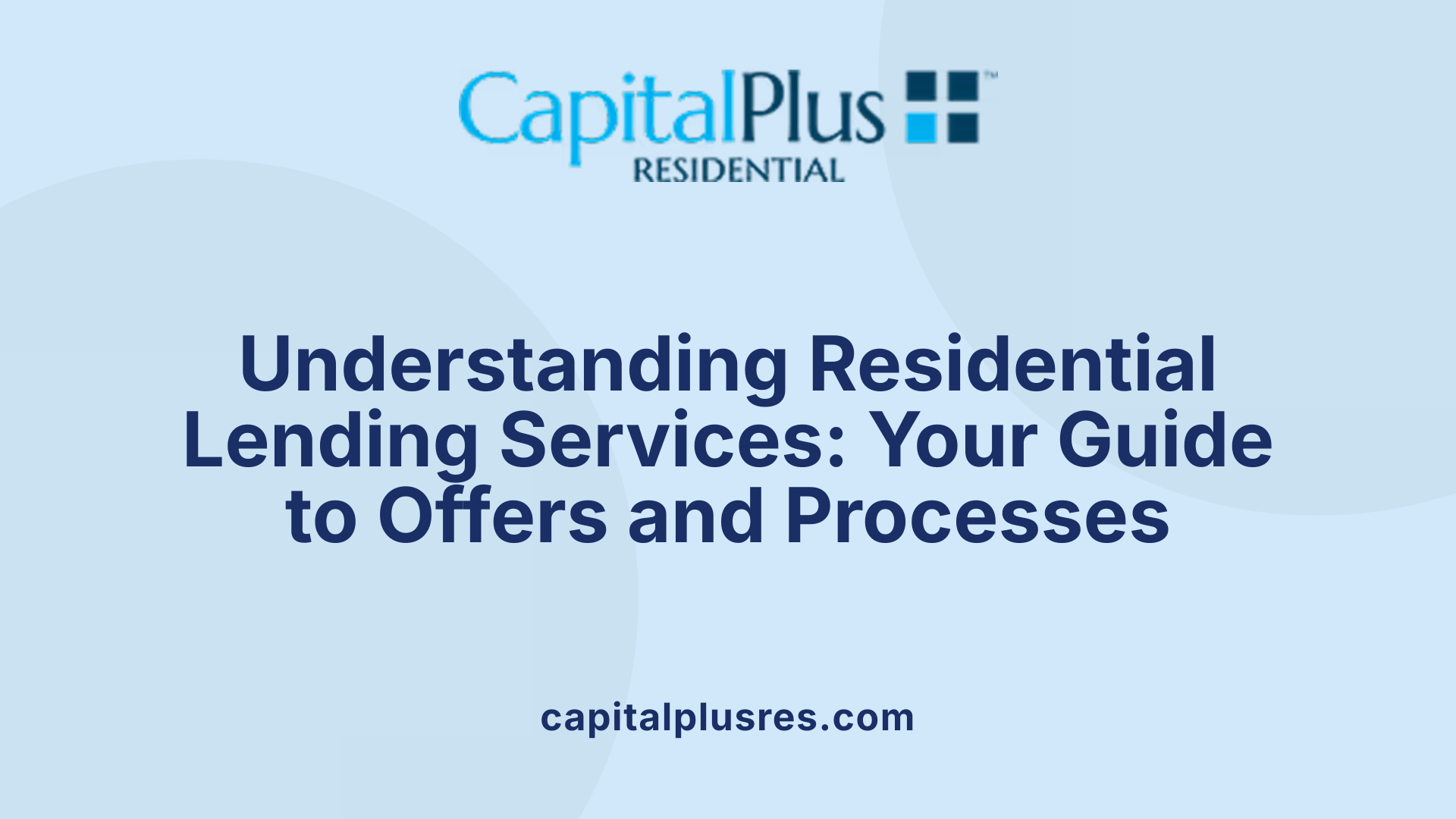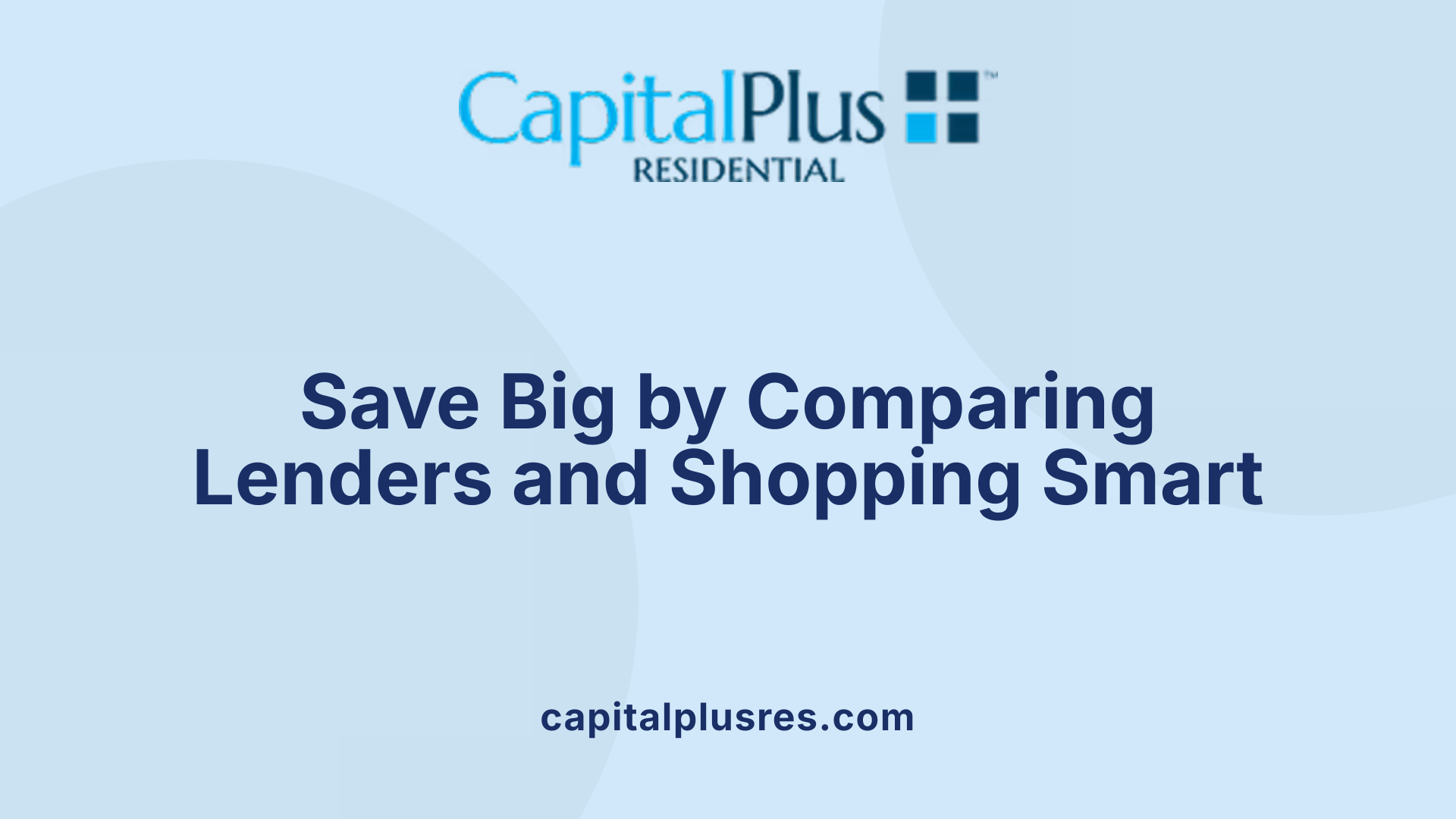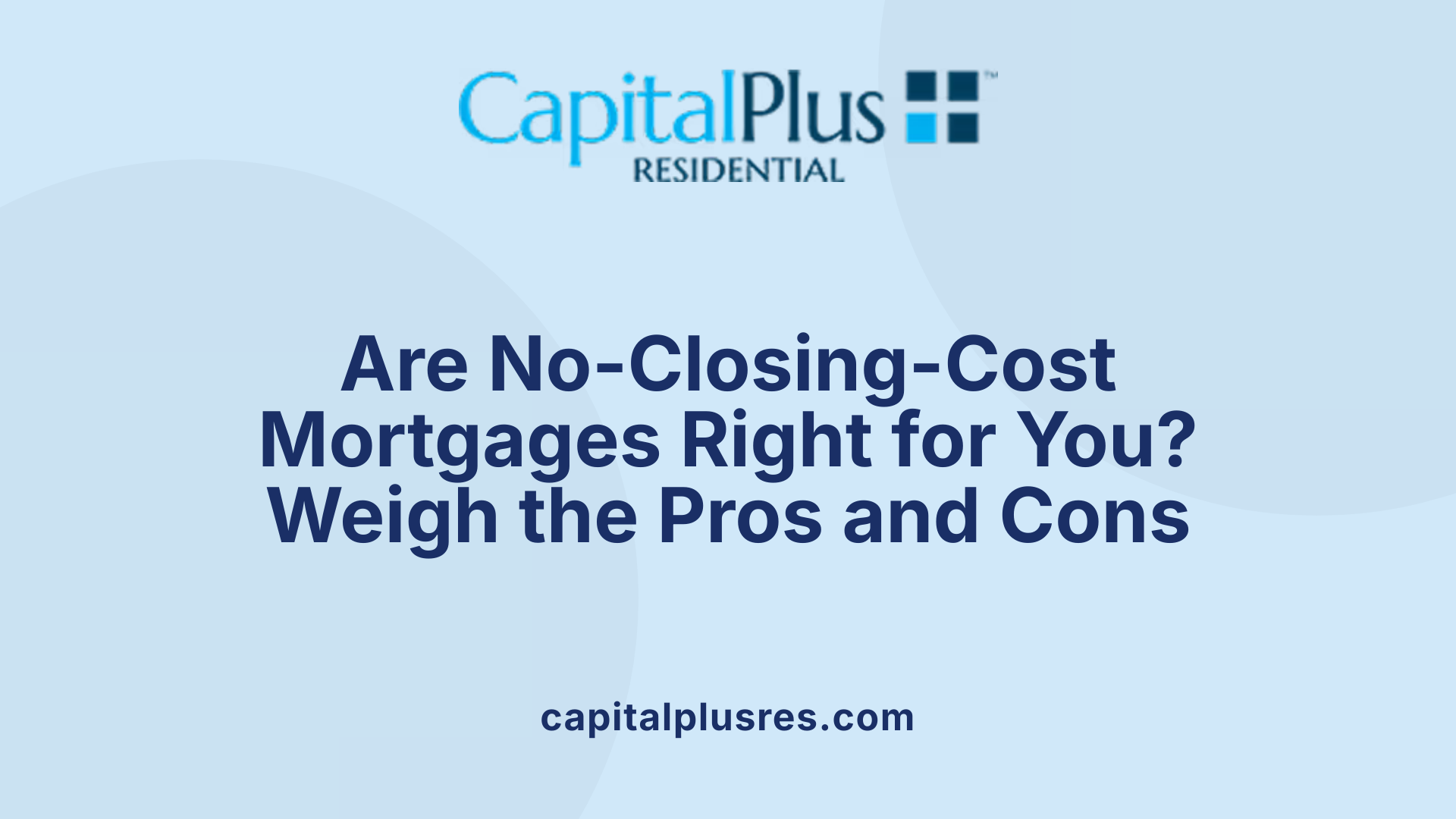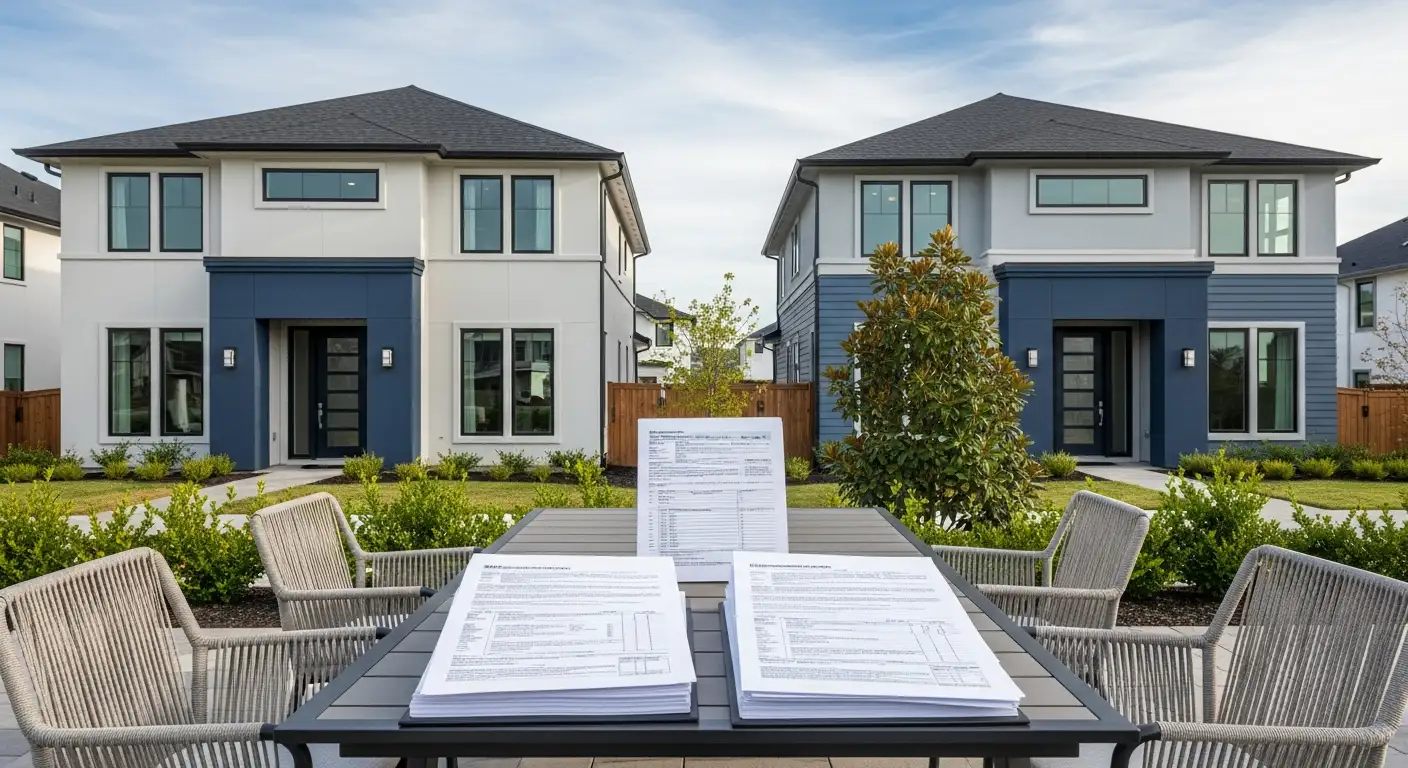Understanding Closing Costs in Home Buying
Buying a home involves more than just the purchase price and down payment. Closing costs—a collection of fees and expenses paid at the final stage of your home purchase—can significantly impact your budget. Typically ranging from 2% to 6% of the mortgage amount, these costs cover lender fees, title services, home insurance, taxes, and more. Understanding these charges, knowing how to negotiate, and exploring strategic ways to reduce them can save you thousands. This article guides you through practical methods to lower your closing costs and make your home purchase more affordable.
What Exactly Are Closing Costs?
What are closing costs?
Closing costs are the fees and expenses buyers pay on closing day to complete their home purchase, separate from the down payment. These costs typically range from 2% to 6% of the mortgage amount, making them a significant addition to overall home expenses.
What do closing costs include?
Closing costs cover a variety of fees that are essential for finalizing the sale and securing the mortgage. Common fees include:
- Lender fees: Origination, underwriting, and processing fees assessing the borrower’s creditworthiness.
- Appraisal fees: Usually $300–$600 to confirm the property's market value.
- Title insurance: Protects against legal issues with property ownership, priced relative to the purchase price.
- Escrow fees: Typically 1% to 2% of the sale price, paid to the escrow agent managing funds and documents.
- Prepaid amounts: Taxes and homeowners insurance premiums are often paid upfront at closing for several months ahead.
- Other fees: Attorney fees, recording fees, surveys, credit reports, and pest inspections.
Role of prepaid interest and insurance
Interest accrued between the closing date and the first mortgage payment is collected at closing, affecting prepaid interest costs. Additionally, the first year of homeowners insurance is usually paid at this time, safeguarding the property from damage or loss.
By understanding these components, homebuyers can better prepare for the financial commitment beyond the down payment, ensuring a smoother and more informed closing process.
Mortgage Brokerage Services and Their Role in Cost Savings
What are mortgage brokerage services?
Mortgage brokerage services act as intermediaries between homebuyers and lenders, helping borrowers secure residential mortgage loans that fit their financial situation. Brokers assess a borrower's credit, income, and goals, then connect them with various lenders, including conventional and sometimes non-QM (non-qualified mortgage) options. This guidance helps buyers access loan products they might not find on their own.
How do brokers assist in finding competitive mortgage options?
Mortgage brokers leverage their broad network of lenders to shop for competitive interest rates and favorable loan terms. They provide borrowers with multiple loan estimates, assisting in comparing upfront closing costs, lender fees, and long-term payments. Brokers can also help identify loans with no-closing-cost options or loans that roll fees into the mortgage balance, offering alternatives suited to the buyer's financial goals.
What benefits do borrowers gain from using mortgage brokers?
Borrowers enjoy several advantages when using mortgage brokers:
- Access to a wide variety of lenders and loan products beyond a single bank’s offerings.
- Negotiation assistance that can potentially reduce lender fees and closing costs.
- Expert evaluation of loan estimates to prevent surprises at closing.
- Support navigating complex loan options, including specialized or government-backed programs.
How are mortgage brokers paid, and what regulatory safeguards exist?
Mortgage brokers typically receive payment from lenders via commissions, which usually do not increase the borrower’s costs. This method keeps services accessible while encouraging transparency. Additionally, brokers operate under regulations from the Consumer Financial Protection Bureau (CFPB), which mandates acting in the borrower’s best interest by clearly disclosing all loan terms and fees. This oversight protects consumers from biased advice and hidden costs.
Residential Lending Services Explained

Overview of Residential Lending Services
Residential lending services facilitate the process of securing mortgage loans for individuals buying or refinancing homes. These services encompass everything from evaluating an applicant’s creditworthiness to determining loan terms that suit the borrower’s situation. Lenders also advise customers throughout the application, approval, and closing phases, ensuring compliance with regulatory frameworks such as the California Residential Mortgage Lending Act (CRMLA).
Loan Application, Approval, and Administration Processes
The process begins when a borrower submits a loan application, triggering credit checks and financial assessments. Once approved, the borrower receives disclosures outlining costs, including the Loan Estimate and Closing Disclosure forms. These documents help compare offers and clarify the projected fees. After closing, lenders handle ongoing loan administration, collecting payments, managing escrow accounts, and communicating with the borrower regarding any changes.
Types of Lenders and Their Roles
Residential loans are offered by a variety of lenders, including banks, credit unions, mortgage brokers, and specialized mortgage companies. Each plays a role in either originating, funding, or servicing loans. Banks and credit unions often bundle all functions, while brokers may connect borrowers with multiple lending sources. Understanding these roles helps borrowers find the right lender aligned with their needs and preferences.
Importance of Shopping Around Among Lenders for Better Rates and Costs
Shopping around is crucial for securing favorable interest rates and minimizing closing costs. Different lenders charge varying fees for services like origination, processing, and underwriting. Comparing Loan Estimates reveals differences in lender fees, title insurance, and other closing costs. Borrowers who actively compare offers can negotiate better terms or secure lender credits, reducing overall expenses. This step can save thousands and ensures informed financial decisions when obtaining a mortgage.
Advantages of Working with a Mortgage Broker When Buying a Home
What are the benefits of using a mortgage broker for residential lending?
Mortgage brokers provide valuable advantages to homebuyers by connecting them to a wide range of lenders. They offer access to diverse loan products, including exclusive mortgage options that may not be available directly to consumers. This broader selection helps buyers find mortgages tailored to their individual financial situations and homebuying goals.
Access to broader range of lenders and loan products
Unlike going straight to one bank or lender, mortgage brokers tap into a larger network. This access means borrowers can compare multiple offers more easily, increasing the chance of obtaining favorable interest rates and loan terms.
Expert guidance in selecting and negotiating mortgage terms
Mortgage brokers bring professional knowledge to the complex lending process. They evaluate credit standings, income, and other financial details to recommend the best loan structure. Additionally, brokers negotiate on behalf of buyers to reduce lender fees and secure competitive rates, often saving thousands over the life of the loan.
Cost savings through comparison shopping and fee negotiation
By shopping around through a broker, buyers avoid the hassle of contacting multiple lenders themselves. Brokers provide Loan Estimate forms that clearly compare costs, such as origination fees, underwriting charges, and closing expenses. This transparency helps in choosing the most cost-effective loan and potentially negotiating to lower fees.
How brokers simplify paperwork and the loan process
Mortgage brokers also manage much of the paperwork and communication required for loan approval. They coordinate with all parties involved, including lenders, title companies, and insurers to streamline timelines. This role reduces the stress and complexity typically experienced by homebuyers navigating mortgage applications alone.
Through these benefits, mortgage brokers can make the home financing journey smoother, more affordable, and better suited to the buyer’s needs, often at no direct cost to the borrower since they are usually compensated by lenders.
Shopping Around: How Comparing Lenders Cuts Closing Costs

Why Review the Loan Estimate and Closing Disclosure?
When buying a home, understanding every fee helps you save money. The Loan Estimate (LE) form, provided shortly after applying for a mortgage, outlines expected closing costs. Later, before closing, the Closing Disclosure (CD) shows the final figures. Comparing these documents from different lenders allows buyers to identify inconsistencies, unexpected fees, or opportunities for negotiation.
What Fees Should You Compare?
Key fees to scrutinize include lender fees, origination charges, application fees, and the interest rate offered. Origination fees typically range from 0.5% to 1% of the loan amount and cover underwriting and processing the mortgage. Alongside these fees, comparing the interest rates is important, as even slightly lower rates can reduce your total loan costs over time.
How Can Lender Competition Benefit You?
Shopping around encourages competition among lenders which can result in lower fees or better loan terms. Some lenders may offer reduced or waived origination fees, discounted application charges, or better interest rates to attract your business. By obtaining Loan Estimates from multiple lenders, you create leverage to negotiate the best deal.
What Are Lender Credits?
Lender credits are incentives lenders use to offset closing fees. They may offer to pay a portion of your closing costs in exchange for a slightly higher mortgage interest rate. This can reduce the upfront expenses you need to pay at closing while balancing your monthly payments. Carefully assess this tradeoff to decide what fits your financial situation best.
In summary, diligent comparison of Loan Estimates and Closing Disclosures across lenders enables you to find the most cost-effective mortgage solution. Leveraging lender competition and being aware of credits can significantly reduce the amount you pay at closing and over the life of your loan.
Negotiating with Sellers to Reduce Your Closing Expenses

Requesting seller contributions towards closing costs
Homebuyers can significantly reduce their out-of-pocket expenses by asking sellers to contribute towards their closing costs. This approach helps cover fees such as appraisal, title insurance, escrow, and lender charges usually paid on closing day.
Market conditions influencing negotiation power
The ability to negotiate closing cost contributions largely depends on market conditions. In markets with more homes than buyers or where demand is slower, sellers are often more willing to offer concessions to attract buyers. Conversely, in competitive markets with high demand, sellers may resist such requests.
Seller concessions limits based on loan types (Conventional, FHA, VA)
Seller contribution limits vary by loan type:
| Loan Type | Maximum Seller Contribution | Notes |
|---|---|---|
| Conventional | Up to 3% to 9% depending on down payment and property use | Higher limits apply for larger down payments and investment properties |
| FHA | Up to 6% | Covers a broad range of closing costs |
| VA | Up to 4% for certain closing costs | Includes funding fees and other allowable costs |
Understanding these limits helps buyers negotiate effectively within lender guidelines.
Strategies to request reductions or price adjustments
Buyers can employ several tactics to ease closing costs:
- Propose direct seller contributions toward specific closing fees.
- Request a lower sales price with the understanding that closing costs will remain fixed.
- Use a competitive offer with contingencies allowing renegotiation if appraisal values differ.
- Present estimates comparing buyer-paid costs with and without seller concessions to justify requests.
Through informed negotiation and awareness of market context and loan rules, buyers can reduce closing costs and ease the home purchase process.
Selecting Service Providers: Title Insurance, Inspections, and More
Why Shopping for Title Insurance Can Save You Money
Title insurance protects the legal transfer of property and is usually calculated based on the home's purchase price. However, rates for title insurance can vary significantly between providers. By shopping around, homebuyers can often secure lower rates, leading to substantial savings in their overall closing costs.
Comparing Costs for Home Inspections, Surveys, and Pest Inspections
Services such as home inspections, property surveys, and pest inspections are essential for a thorough homebuying process. These fees can range from a few hundred dollars each but vary widely depending on the provider. Comparing these costs from different companies enables buyers to find competitive prices without compromising on service quality.
How Service Provider Choices Impact Total Closing Costs
Since closing costs can generally range from 2% to 6% of the mortgage amount, selecting affordable service providers has a direct effect on the amount you pay at closing. Unlike fixed government fees—which are non-negotiable—fees for services like title insurance or inspections offer flexibility. Choosing lower-priced but reputable providers for these variable costs can reduce out-of-pocket expenses considerably.
Fixed Government Fees vs. Flexible Services
Certain costs such as taxes, recording fees, and government charges are fixed and cannot be negotiated or waived. Therefore, buyers should focus their efforts on shopping and negotiating for flexible services, including title insurance providers, inspectors, and surveyors. This approach maximizes potential savings and helps control overall closing costs.
| Service Type | Typical Cost Range | Notes |
|---|---|---|
| Title Insurance | Varies by purchase price | Rate differences found by shopping providers |
| Home Inspection | $300 – $600 | Price varies with inspector and property size |
| Property Survey | Several hundred dollars | Essential for confirming property boundaries |
| Pest Inspection | Typically few hundred dollars | Rates differ; important for buyer peace of mind |
By being proactive and comparing estimates for these services, homebuyers can keep their closing costs manageable, making the home purchase more affordable overall.
No-Closing-Cost Mortgages: Pros and Cons

What are no-closing-cost mortgages and how they work
No-closing-cost mortgages allow homebuyers to avoid paying upfront closing costs at the time of purchase. Instead of paying these fees out of pocket, the costs are either rolled into the loan amount or offset by agreeing to a higher interest rate. This means buyers don’t have to come up with thousands of dollars at closing, making homeownership more accessible initially.
How costs are rolled into the loan or offset by higher interest rates
In a no-closing-cost mortgage, the lender typically increases the loan balance by the amount of closing costs or raises the mortgage interest rate offered. For example, if the closing costs amount to $6,000, that money is added to the principal loan or compensated through a slightly higher interest percentage. This way, the lender recovers the fees over the life of the loan rather than at closing.
Impact on monthly payments and overall loan cost
While no-closing-cost mortgages reduce initial expenses, they increase monthly payments or total loan costs over time. Incorporating closing costs into the loan raises the principal, resulting in higher interest charges throughout the loan term. Similarly, a higher interest rate means the borrower pays more interest each month. Overall, this approach leads to a more expensive loan, although it eases immediate financial strain.
When considering no-closing-cost mortgages makes sense
Choosing a no-closing-cost mortgage can be smart for buyers with limited cash reserves who want to minimize upfront spending. It’s also useful for those planning to sell or refinance within a few years, as the longer-term higher costs may not outweigh the benefit of saving on closing day. However, for buyers who can afford closing costs upfront and plan to keep the loan long-term, paying closing costs out of pocket is typically less expensive over time.
Timing Your Closing to Minimize Prepaid Interest Costs
How closing date affects prepaid interest paid at closing
Prepaid interest is the amount of interest charged on your mortgage loan from the closing date until your first mortgage payment is due. Since mortgage interest accumulates daily, the exact closing date directly affects how much prepaid interest you'll owe at closing. Closing earlier in the month means more days of accumulated interest to pay upfront, increasing your closing costs.
Benefits of scheduling closing toward end of month
Scheduling your closing toward the end of the month can help reduce the prepaid interest you pay. Because fewer days remain in the month after closing, less daily interest accrues before your first payment. This timing can translate into significant savings on the upfront costs required at closing.
Daily accrual of interest and potential savings
Mortgage interest is usually calculated daily based on the loan balance and interest rate. For example, if your closing is on the 25th of the month, you pay interest for only 5-6 days before your first payment, versus 25-26 days if you close on the 1st. These savings on prepaid interest can ease your initial cash outlay, making homeownership more affordable sooner.
Interaction with mortgage payment schedule
Mortgage payments are typically due on the first day of each month, covering interest for the previous month. Prepaid interest covers the days from your closing date until the start of the first payment period. Therefore, closing later in the month aligns the prepaid interest with fewer days, effectively lowering closing day expenses related to interest.
By strategically timing your closing date near the month's end, you can better manage and reduce your upfront financial responsibilities related to mortgage interest.
Understanding Fixed Versus Negotiable Closing Costs
What Are Fixed Costs in Closing?
Fixed costs are fees related to your home purchase that are generally non-negotiable and derived from taxes or government charges. These include property taxes, transfer taxes, recording fees, and other governmental fees tied directly to the transaction or your locality. Because these charges are set by law or regulation, buyers cannot reduce them through negotiation or shopping.
Which Closing Costs Can You Shop or Negotiate?
Beyond the fixed fees, there are many variable closing costs where buyers have room to save. These include lender fees like origination and underwriting, title insurance, home inspections, surveys, and attorney fees. Buyers are encouraged to compare estimates from multiple service providers to find better prices. Additionally, negotiating with your lender to reduce or waive certain fees or with the seller for closing cost concessions can significantly lower your out-of-pocket expenses.
Focus Areas to Minimize Closing Costs
Cost-saving efforts are most effective when targeting areas such as:
- Lender fees by shopping for competitive Loan Estimates
- Title and escrow services through comparison shopping
- Homeowners insurance rates by obtaining multiple quotes
- Seller concessions, particularly in buyer-favorable markets
- Timing the closing towards the end of the month to reduce prepaid interest
What Are Realistic Expectations for Reducing Closing Costs?
While some variable fees can be lowered or negotiated, it is not possible to eliminate all closing costs because mandatory taxes and fees remain fixed. A typical range for closing costs is 2% to 6% of the loan amount. Smart shoppers can anticipate negotiating a portion of this, often reducing these fees by a few thousand dollars, but should budget accordingly to cover unavoidable fixed charges.
Additional Tips: Assistance Programs and Cost-Saving Strategies

How Can First-Time Homebuyer Assistance Programs Help with Closing Costs?
First-time buyers often face challenges covering the upfront expenses of purchasing a home, including closing costs. To ease this burden, many assistance programs offer grants, forgivable loans, or other financial aid specifically for closing costs. These programs vary by location and eligibility but can significantly reduce out-of-pocket expenses, making home ownership more accessible.
What Are the Benefits of Buying FSBO Properties?
Purchasing a property listed "For Sale By Owner" (FSBO) may save buyers money by eliminating real estate agent commissions. Without these commissions, fewer fees contribute to closing costs, which can lower the overall cost of closing. Buyers interested in FSBO homes should ensure proper due diligence since the process may lack typical agent support.
How Do Lender Credits and Rebates Reduce Closing Expenses?
Some lenders offer credits or rebates that offset closing costs. By negotiating these credits at loan application, homebuyers can reduce the amount they pay upfront. Keep in mind these incentives might come with trade-offs, such as slightly higher interest rates, so it’s important to weigh the long-term costs against immediate savings.
What Are Best Practices to Minimize Closing Costs?
To reduce closing expenses, homebuyers should:
- Shop around for lenders and compare Loan Estimates thoroughly
- Negotiate closing cost contributions with sellers
- Explore homebuyer assistance programs for financial aid
- Consider the timing of the closing to reduce prepaid interest
- Review service providers for title insurance, home inspections, and surveys and choose competitively priced ones
- Investigate the option of no-closing-cost mortgages, understanding the trade-offs involved
By combining these strategies and staying informed, buyers can make substantial progress in lowering their closing costs and improving affordability.
Making Closing Costs Work for You
Closing costs are an inevitable part of home buying, but savvy buyers can dramatically reduce these expenses through careful planning, negotiating, and comparison shopping. Leveraging mortgage brokerage services and residential lenders, negotiating with sellers, selecting cost-efficient service providers, and timing your closing strategically all contribute to lower out-of-pocket costs. Whether you choose a no-closing-cost mortgage or seek assistance programs, understanding the components and options surrounding closing costs empowers you to save money and confidently move into your new home.
References
- 7 Ways To Reduce Your Closing Costs
- Closing costs: What are they, and how much will you pay?
- Average Closing Costs 2025 | List of Closing Costs
- What Are Closing Costs and How Much Will I Pay?
- How To Get Closing Costs Waived, Reduced Or Negotiated
- What Is A Mortgage Broker And How Do They Help ...
- Mortgage Brokers: Advantages and Disadvantages
- What Is A Mortgage Broker And How Do They Help ...
- Understanding Lenders and How They Help Homebuyers
Latest Blog


Get Pre-Approved Today
Start your secure online application now so you can get pre-approved for a mortgage (and close on your dream home) quickly within 5 minutes.









